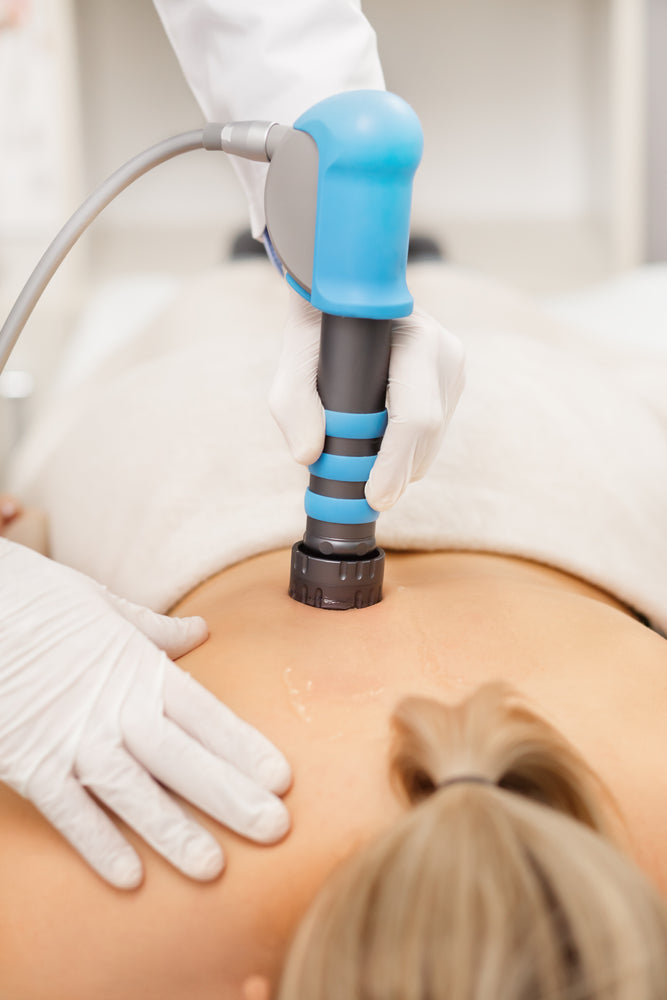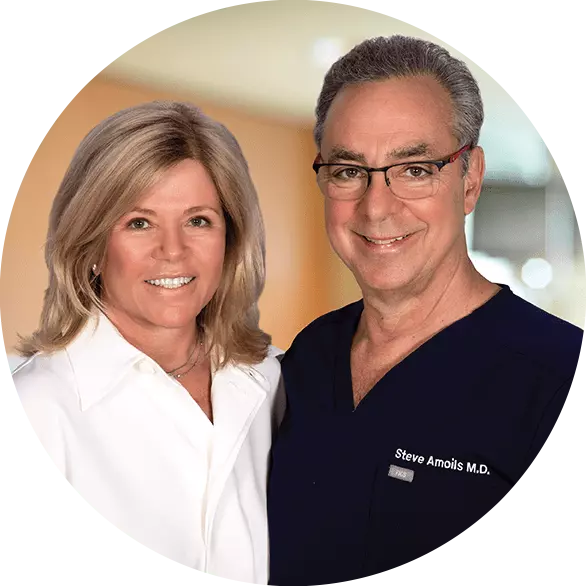-
- Our Approach
- Focus Areas
- Treatments
- Additional Treatments
-
- Shop
- Brands
- Focus Areas
Item added to your cart
Shockwave therapy is also known as Extracorporeal Shockwave Therapy (ESWT) or Radial Shockwave Therapy (RSWT). Shockwave therapy is a noninvasive treatment that involves delivery of shock waves to injured soft tissue to reduce pain and promote healing. It can relieve pain and promote healing of injured tendons, ligaments, and other soft tissues. It accomplishes this by releasing growth factors in the injured tissue.

Pressure waves from ESWT and RSWT can deliver a mechanical force to body tissues, promoting healing by stimulating blood flow and metabolism. Increased blood flow can be especially beneficial in tendons, which do not get much blood supply and heal slowly. Shockwaves can mimic the forces experienced during trauma and promote regrowth and healing of tissue and bone.
During treatment, a shockwave device will be held next to the skin. The device sends shockwaves into the injured tissues, stimulating increased blood flow and growth hormones to the area, promoting new tissue growth.
There are two types of shockwave therapy:
• Focused shockwave therapy is based on the same technology that dissolves kidney stones. It sends deep vibrations into the tissues.
• Radial shockwave therapy delivers shockwaves more superficially but can be equally effective.
• Depending on your condition, your therapist may choose to use one or both types of shockwave therapy.
Shockwave therapy is a noninvasive, nonsurgical treatment, but you might feel a little pain or discomfort in the treatment area during the procedure. Most patients say it feels like small pulses against the skin. Most patients report some discomfort during shockwave therapy, but most do not find it painful. The amount of discomfort depends in part on the person, their injury, and whether the damaged tissues are close to a bone. Where on the body we are treating you also matters – body parts with less skin and muscle can be more sensitive.
• Mild to moderate arthritis
• Neck and lower back pain
• Shoulder pain: calcific tendinitis or rotator cuff syndrome
• Elbow problems: Lateral epicondylitis (Tennis elbow), and Medial epicondylitis (Golfer’s elbow)
• Trochanteric bursitis
• Muscle tears
• Tendonitis: Patellar, Posterior tibialis, and Achilles tendonitis
• Perineal pain
• Plantar fasciitis
Before a treatment: We suggest avoiding taking anti-inflammatories (NSAIDs, prednisone, turmeric and SPMs or Resolvins) for 1 week. Good supplements to take are Fundamental multivitamin and antioxidant (2 caps once or twice a day) and Full Spectrum Collagen Powder (1 scoop daily).
After a treatment: Do not restart anti-inflammatories until 2 weeks after the treatment. For pain or discomfort, use Tylenol only 500 mg up to 4x/day. Additionally, use heat – not ice – for discomfort. Continue taking Fundamental multivitamin and antioxidant (2 caps once or twice a day) and Full Spectrum Collagen Powder (1 scoop daily). Avoid heavy exercise for 1-2 days after shockwave therapy, depending on how you are feeling.
• Excellent cost-effectiveness ratio
• Noninvasive solution for chronic pain in your shoulder, back, heel, knee, or elbow
• No anesthesia required, no drugs
• Limited side effects
• New research shows a positive effect on acute pain
You will likely need 6 to 10 treatments depending on the condition.
What is the Cost? The cost of each treatment is $165.
How Many Treatments/How Often? 6 to 10 treatments over 6 to 12 weeks
Is This Covered by Insurance? Alliance Integrative Medicine does not bill insurance, but we encourage every patient to contact their insurance to see if they are eligible for reimbursement.
Our patient coordinator is standing by, happy to answer any questions you have to determine if Alliance Integrative Medicine (AIM) is right for you.
